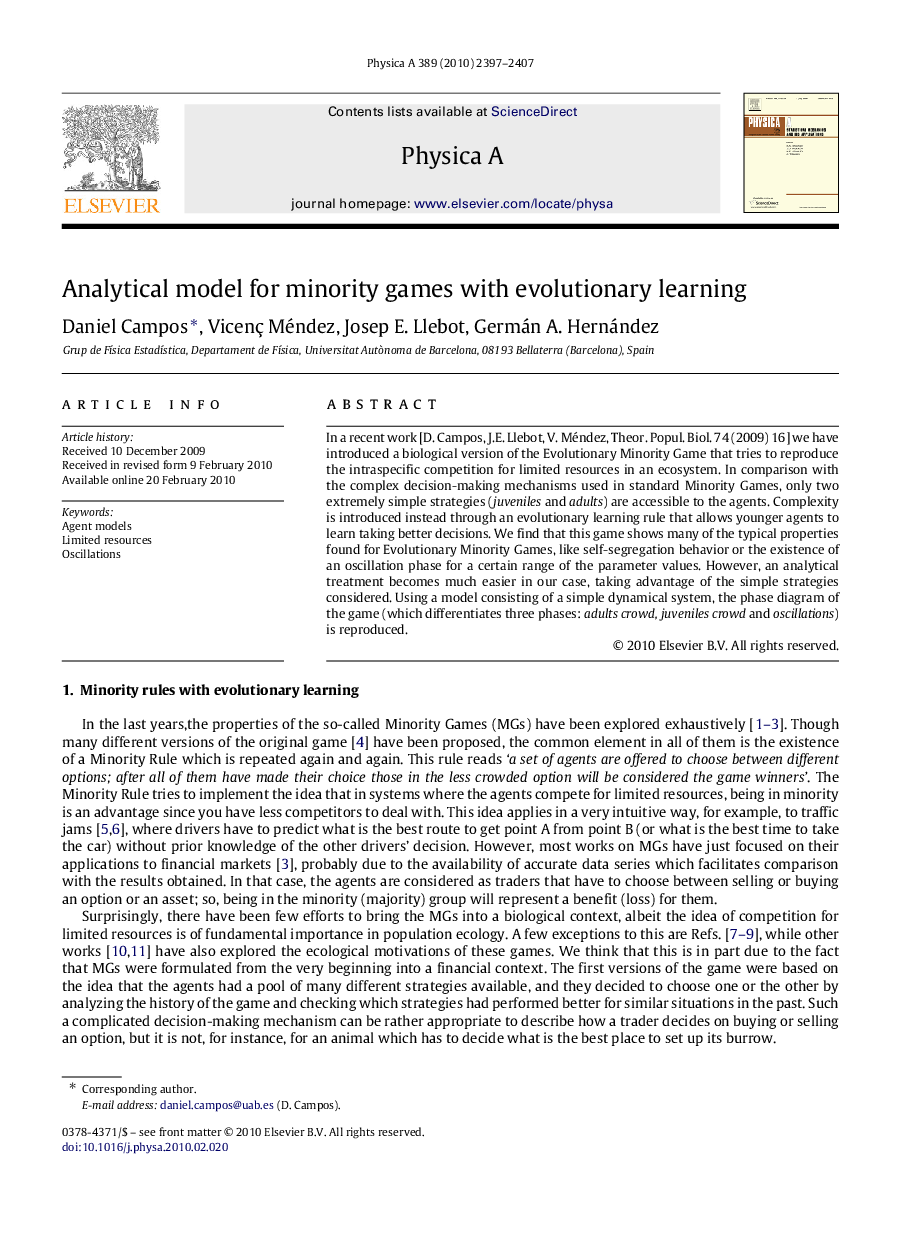| Article ID | Journal | Published Year | Pages | File Type |
|---|---|---|---|---|
| 976857 | Physica A: Statistical Mechanics and its Applications | 2010 | 11 Pages |
In a recent work [D. Campos, J.E. Llebot, V. Méndez, Theor. Popul. Biol. 74 (2009) 16] we have introduced a biological version of the Evolutionary Minority Game that tries to reproduce the intraspecific competition for limited resources in an ecosystem. In comparison with the complex decision-making mechanisms used in standard Minority Games, only two extremely simple strategies (juveniles and adults) are accessible to the agents. Complexity is introduced instead through an evolutionary learning rule that allows younger agents to learn taking better decisions. We find that this game shows many of the typical properties found for Evolutionary Minority Games, like self-segregation behavior or the existence of an oscillation phase for a certain range of the parameter values. However, an analytical treatment becomes much easier in our case, taking advantage of the simple strategies considered. Using a model consisting of a simple dynamical system, the phase diagram of the game (which differentiates three phases: adults crowd, juveniles crowd and oscillations) is reproduced.
